-A bit late going live this week. There were some technical issues with the photos below. I wonder if the spirits weren’t willing.
I had planned on this week’s article as being a fluff photo-montage of all things witchy and kitchy from my trip yesterday to Salem, Massachusetts.
That probably would have been the case, but for the maintenance schedule of the trains from Boston, which precipitated my leaving early, arriving early, and finding the majority of shops and attractions in the visitor’s guide being still closed.
I discovered that, much like the shops of the New Orleans French Quarter, the time on the window and the time the proprietor arrives and opens up, may not be as closely connected as one would hope.
This fluidity of lifestyle is part of the charm of places like this, so one learns to adapt. Switching to a more laid-back attitude about time is vitally therapeutic.
I was left with some idle hours to kill. I’d brought my camera along, so I was sure I could find some scenic delights to photograph. I was not disappointed.
As I climbed up the rise on Howard Street toward the tourist part of town, I passed by the Howard Street Cemetery. I snapped several test shots from the road, as the gates were still locked.
I love an interesting graveyard.
I worked in my teens and twenties as caretaker of a large cemetery where my ancestors are interred. My great grandmother had donated the land at some point so that other members of the community might be buried there, but its occupants are still mainly my kith and kin, going back to just after the Revolutionary War (at least as far as we know. Some of the original stones were stones, so it’s not clear when the family first started using that part of our hill side to bury their dead).
Resolving to see if the one on Howard Street was open on my return journey, I made may way on into town. I rambled around the historic buildings that had been relocated next to the old armory which is now a visitor’s center (that was not open on Tuesdays at all -oh well) . Then I ambled toward the sign indicating the Salem Witch Trial Memorial.
One of the shops I was interested in was in that area, I recalled. And I knew I was going to get a look at the memorial, because, well, history and all that. I walked past what I took to be a part of the cemetery wall, saw that cemetery gate was locked, and went looking for another entrance. I rolled all the way around the block , and came back before realizing that this granite rectangle actually was the memorial.
Once I realized it, and realized how the design had been conceived, I took the photos below.
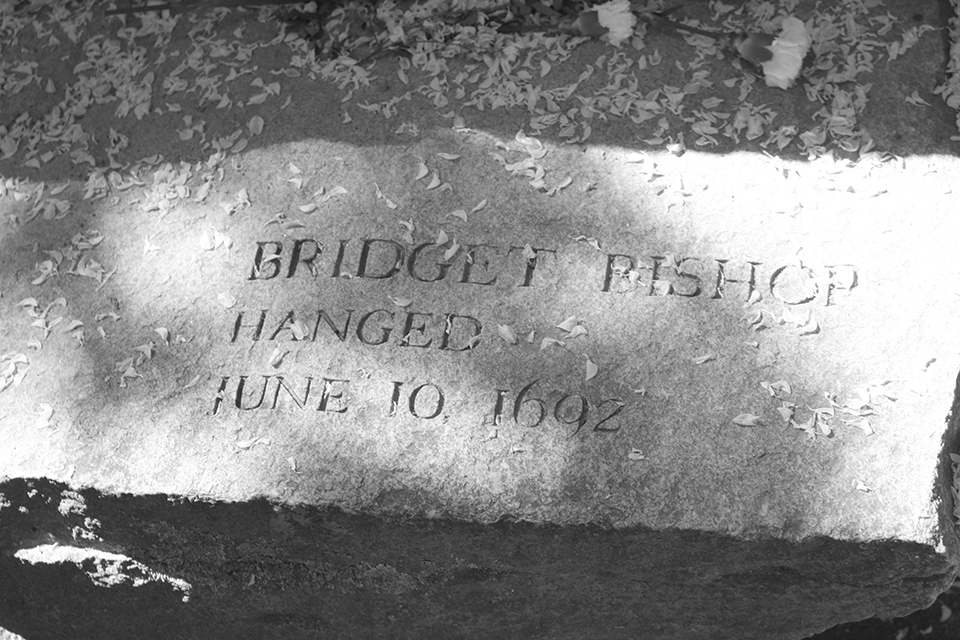
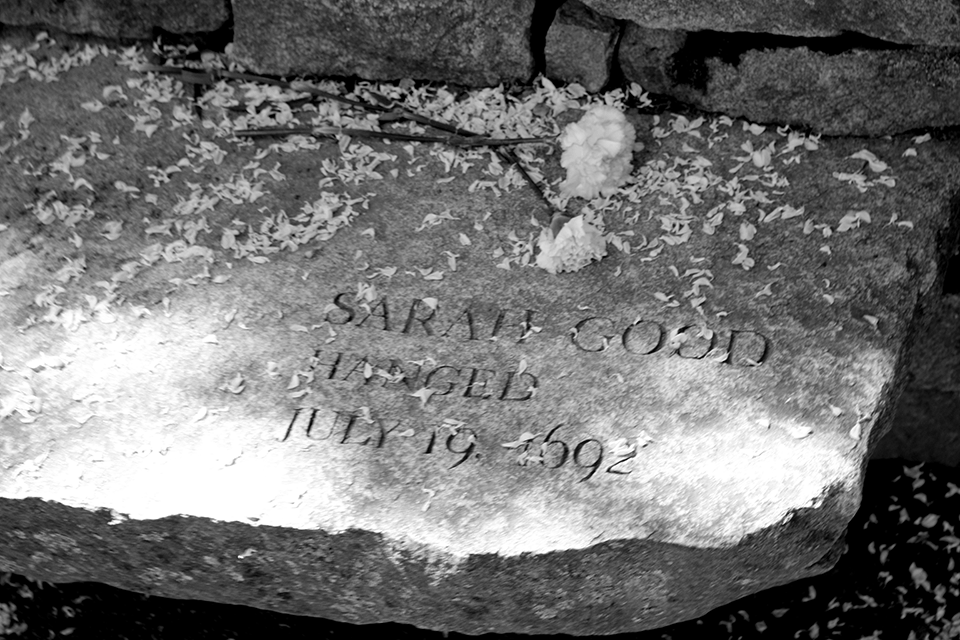
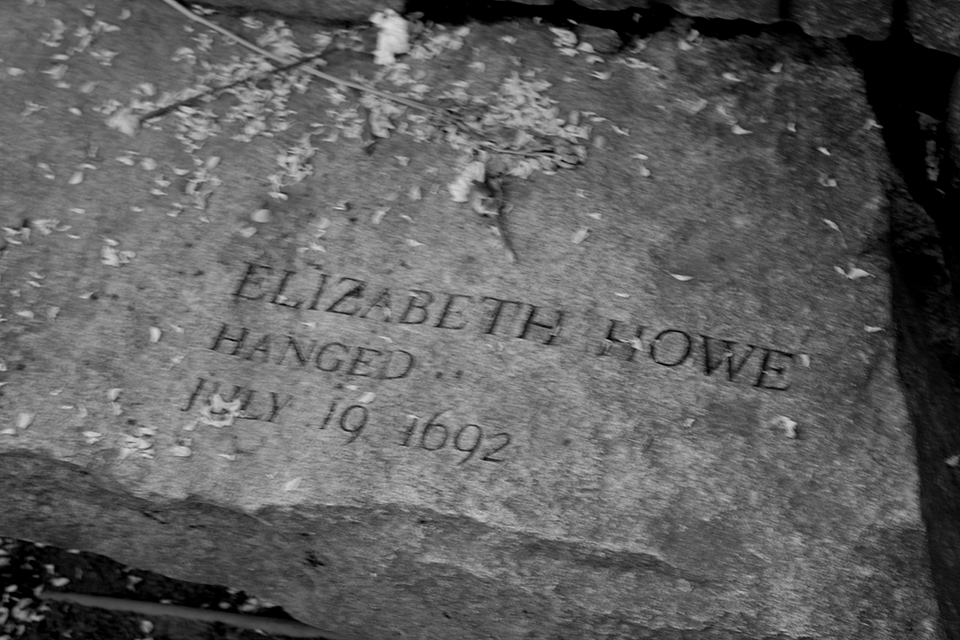
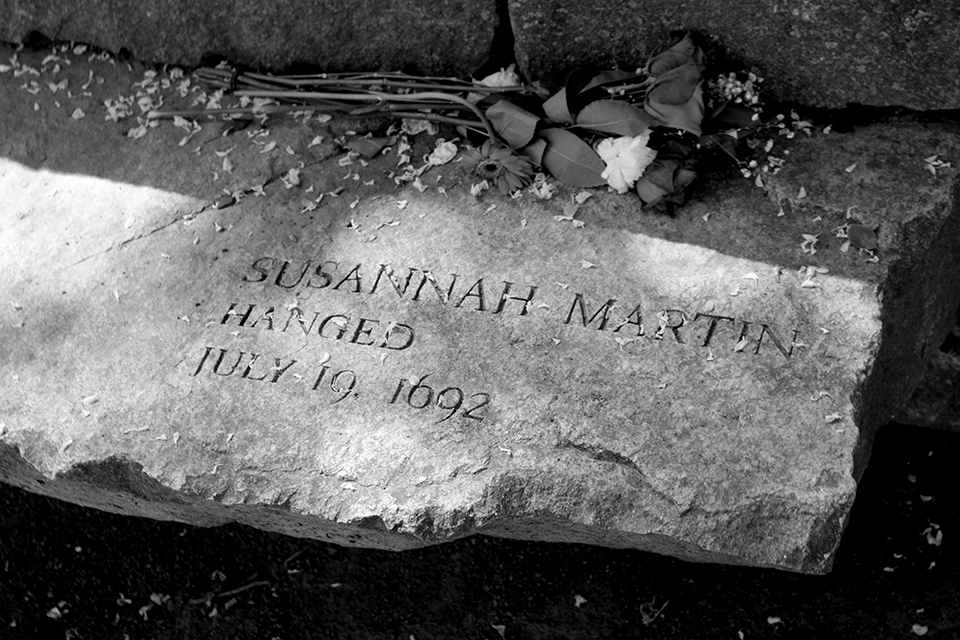
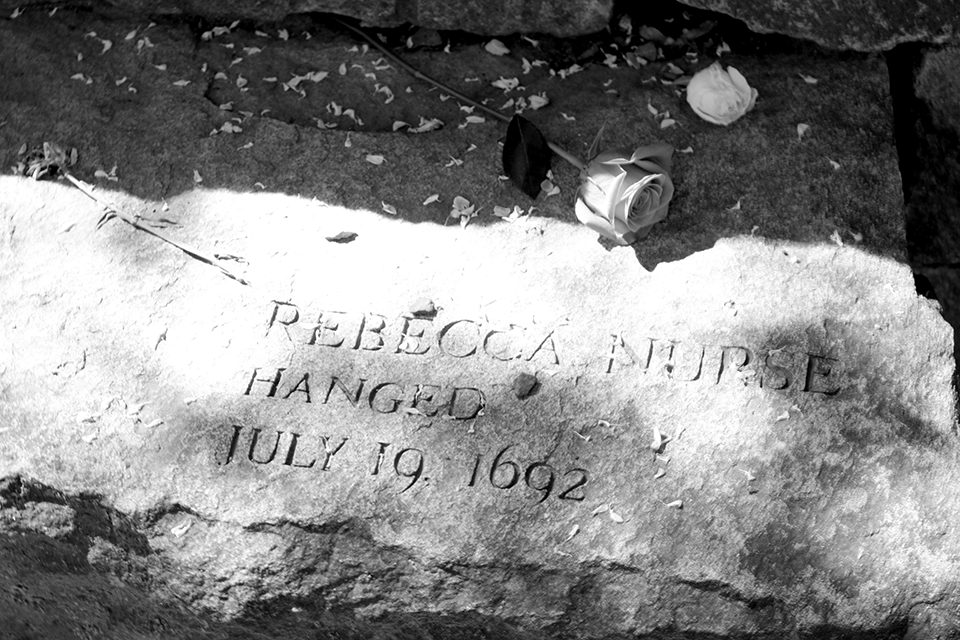

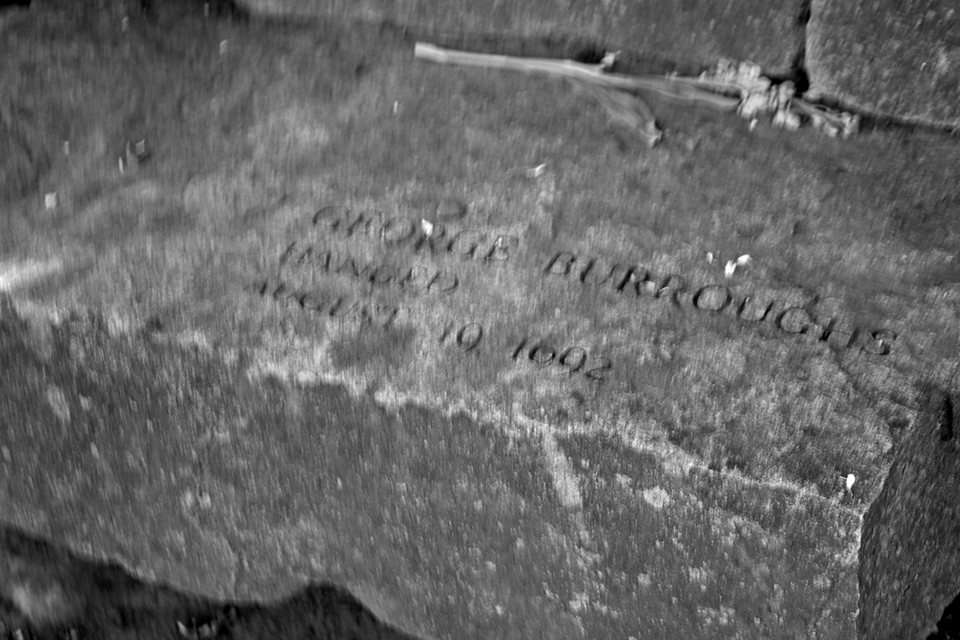
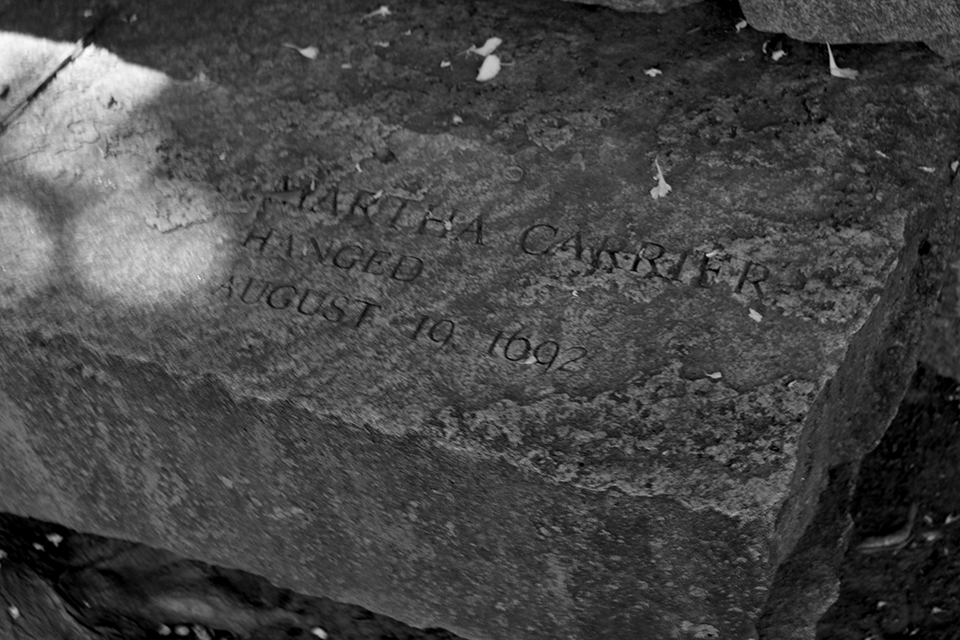
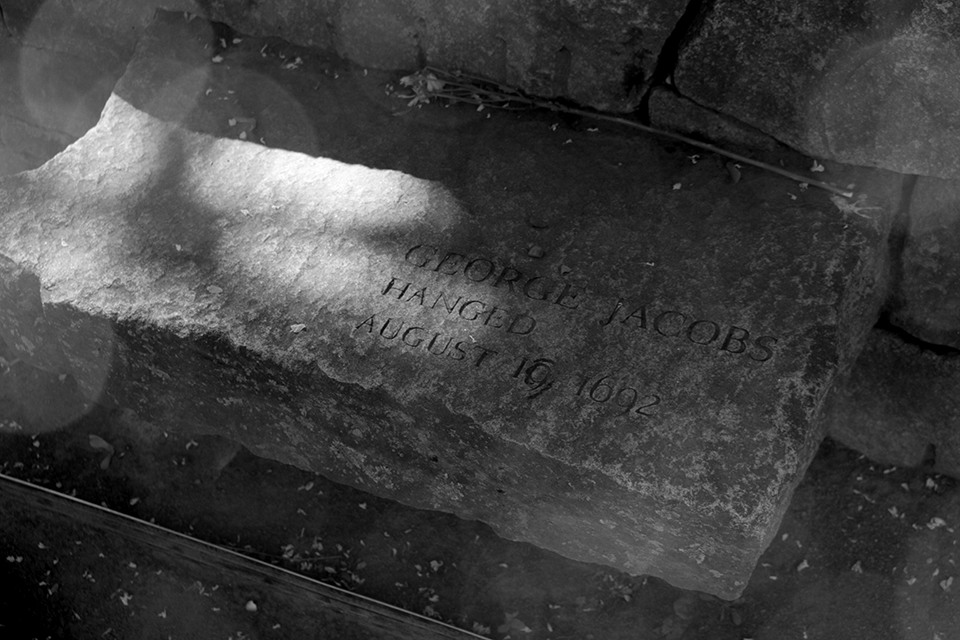
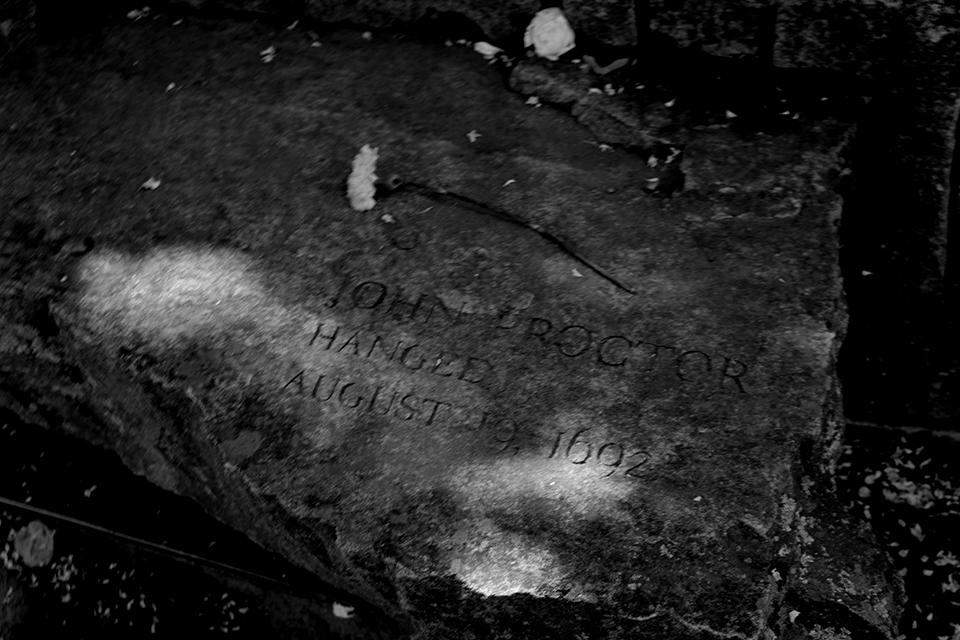
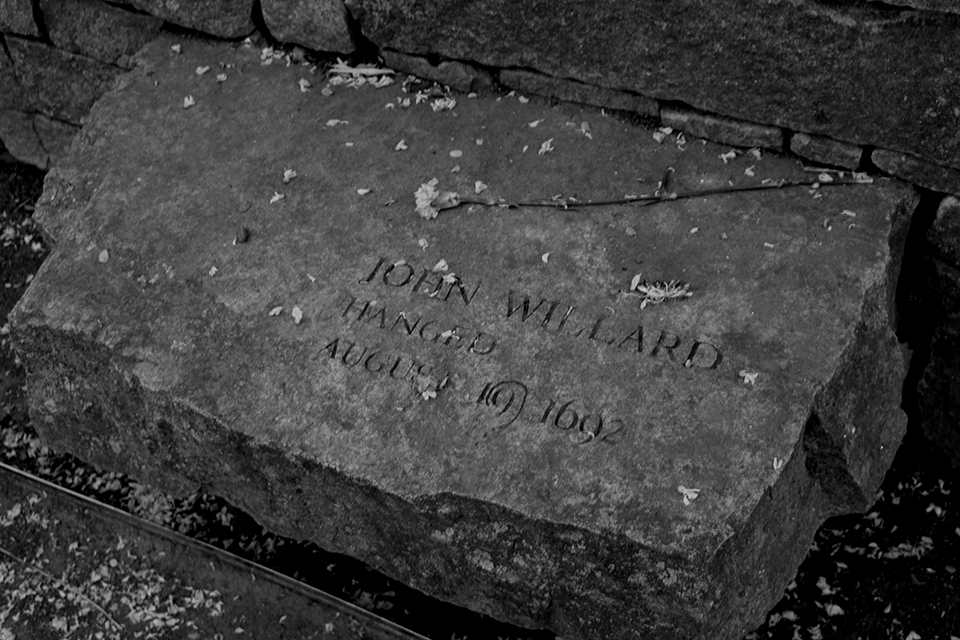

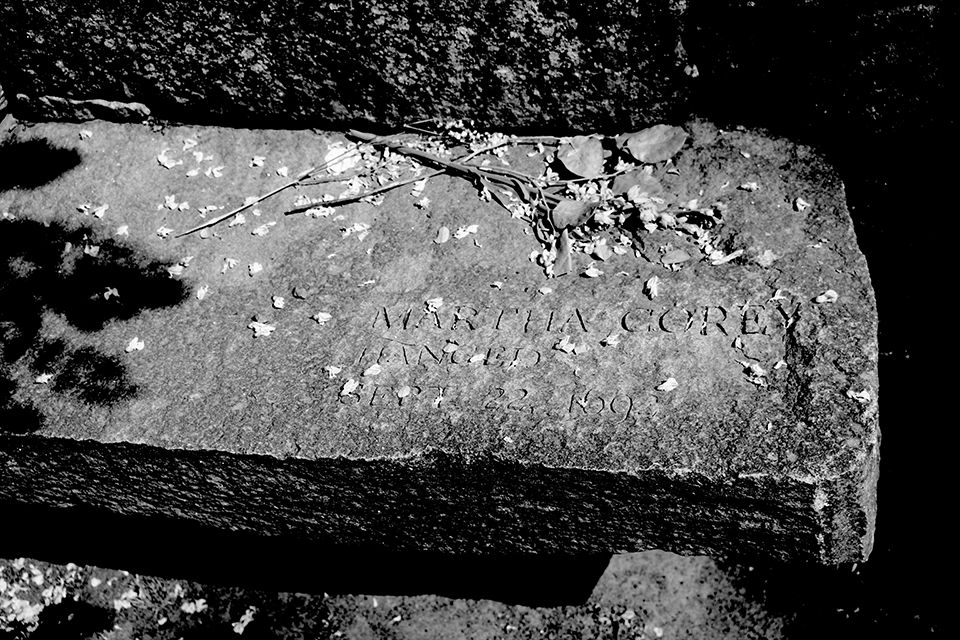
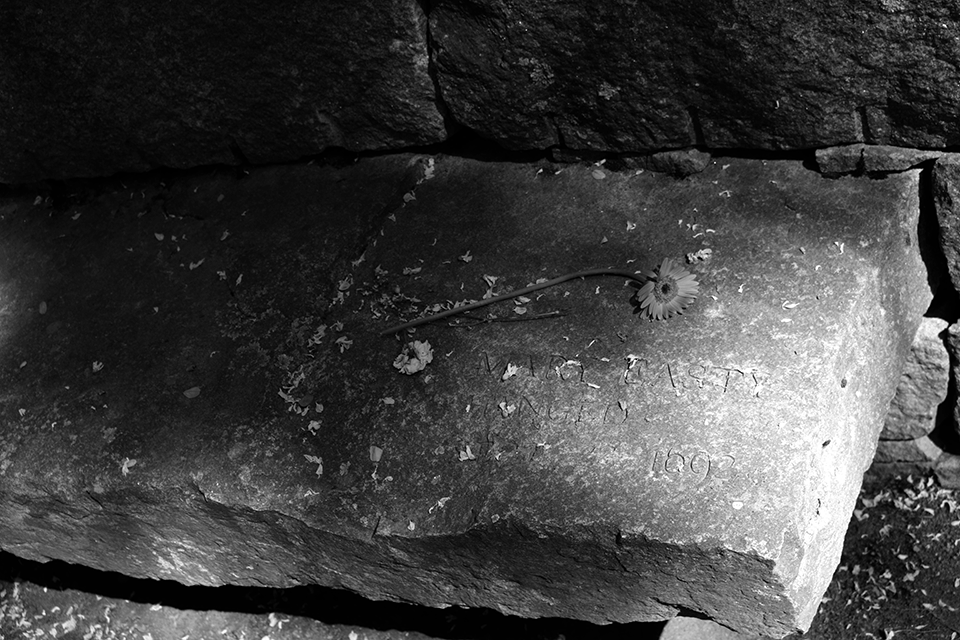

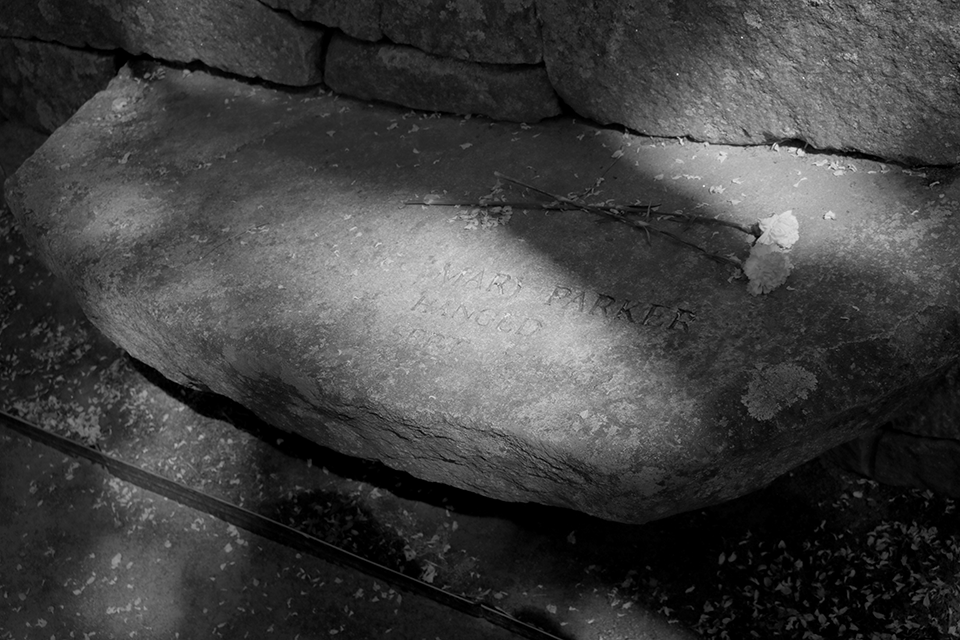
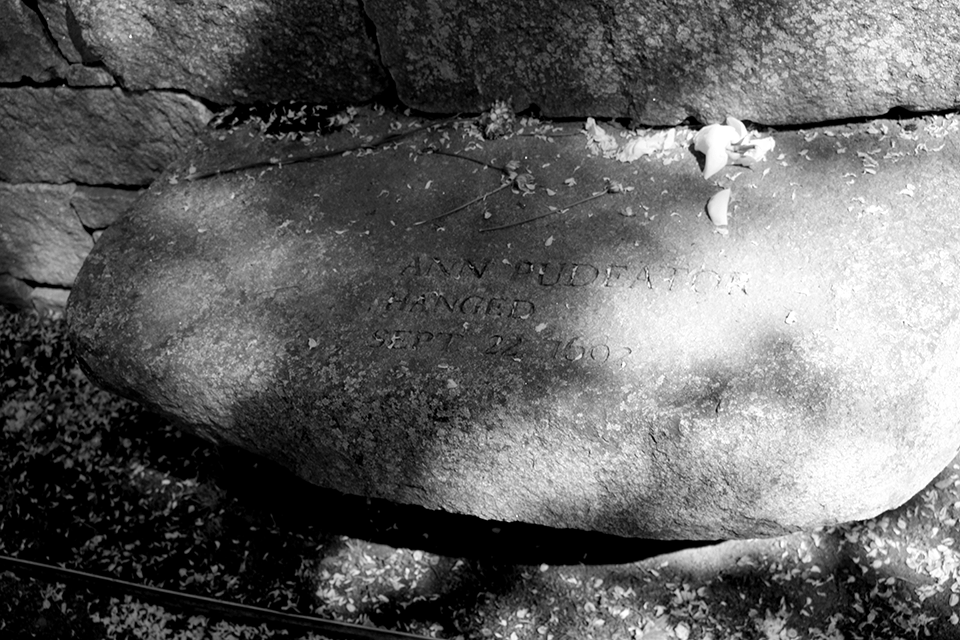
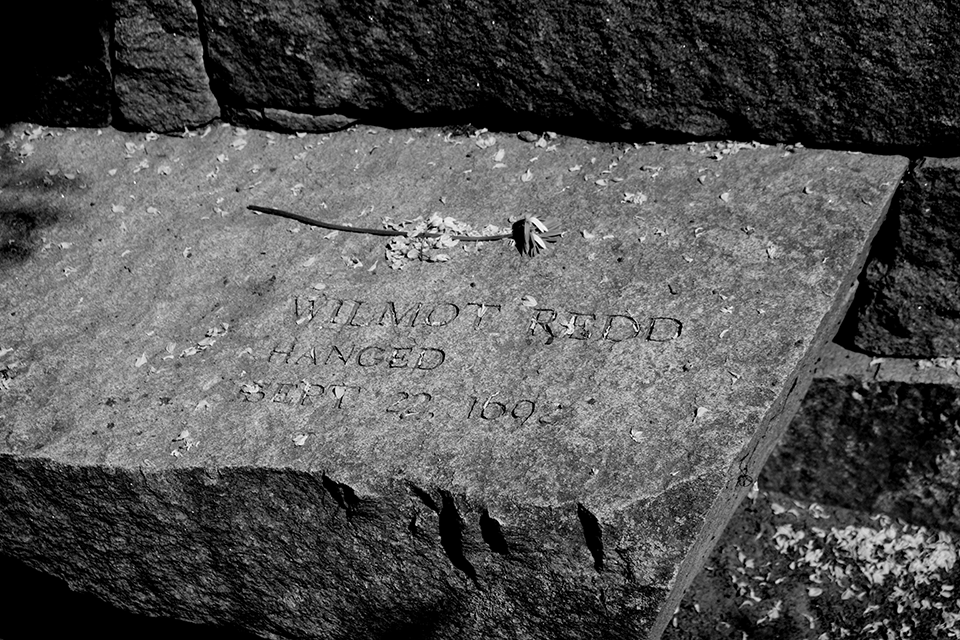
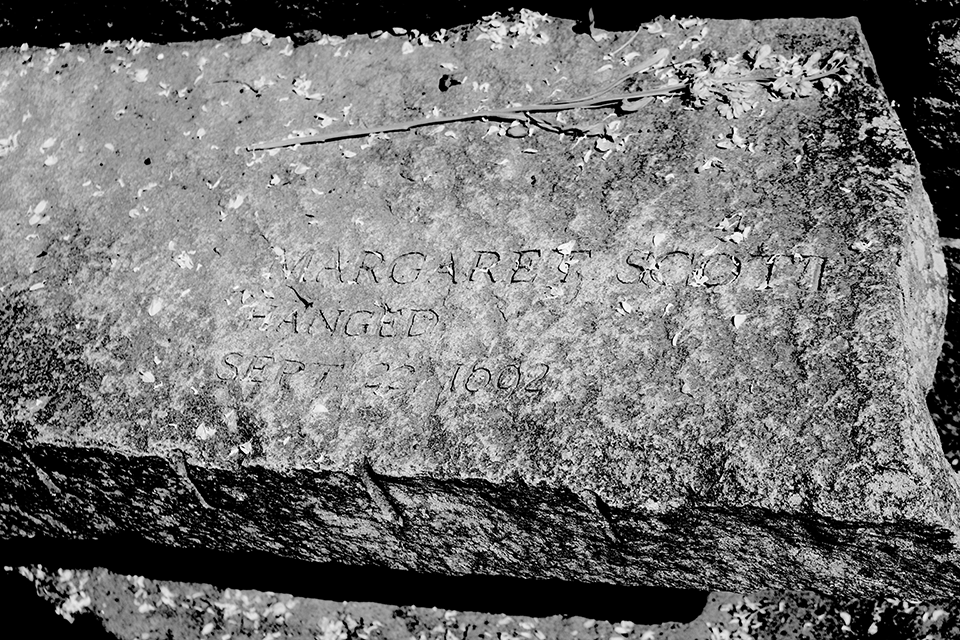

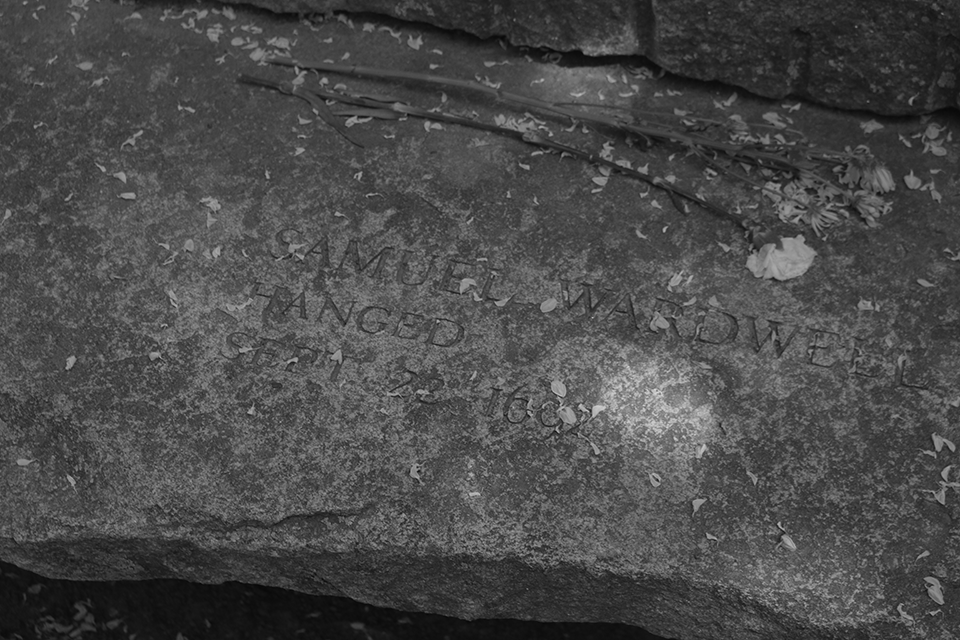
As I made my way around, recording each name, my mood for the day underwent a transformation. What I had expected to be a light touristy kind of experience became something much more profound.
Even though I had read these names many times in my researches on the Salem incident, walking through this memorial brought home to me that these were people. Real, live people, separated from me by hundreds of years, but the same as any one of us. It’s the truest value of places like Salem that it connects us to the human part of history.
These people were murdered for being different.
They were murdered by the civil authority for being different from the rest of the culture.
And that’s all.
While Salem today has a number of practicing witches, there’s little to no evidence that the people killed there in 1692 were actually witches, part of a secret witch conspiracy, or doing anything that could be identified even loosely as witchcraft.
Reports of the Salem incident and three centuries of analysis have blamed it on everything from land disputes to ergot poisoning. We view through the lens of contemporary accounts, who believed, without question, that an evil force was loose among them. The Devil Himself was responsible, and that’s all there was to it.
Left with only their conclusion as to the truth of witchcraft, we are left filling in the gaps, with most explanations dismissing witchcraft entirely (except as a Puritan superstition) .
Yet the accounts (including her confession) say that Tituba, an enslaved African or mixed race woman, had performed divinatory practices with the two young girls whose “fits” were diagnosed as the “bewitchment” that started the entire thing.
Tituba was from the Caribbean originally, so it’s entirely possible that she engaged in some form of voodoo or other practice of African origin. Among the ultra-conservative Puritans, even saying “Bless you” to someone who sneezed might be considered blasphemous.
Anything that didn’t conform to their very narrow interpretation of Christianity was the Work of Satan, especially if it came from someone not quite as white as they all were.
Racism has to considered a cause for the Salem incident. It started with the hateful primitive view of persons of color, as being different, inferior, and ungodly.
If Tituba performed any ritual or act from a Voodoo or Vodun tradition, if she was frustrated and fed up with the two small girls she had been charged with watching briefly, there is little doubt that the Puritan children would have considered themselves in the presence of infernal powers, and their subsequent erratic behavior can be seen as a psychotic reaction to such a terrifying experience.
The tragedy of the Salem incident is that anyone took the ravings of these children seriously. We are talking about a 9 year old and an 11 year old. There were no allegations of actual physical abuse here. It was first and last supernatural. Even during the trials the girls maintained they were being pinched or poked by the accused witches. We are not dealing, at least as far as we can tell, with any actual cases of child abuse or molestation.
So without the Puritan fanaticism, we have no real reason to suspect anyone of witchcraft, beyond perhaps the maid Tituba.
You don’t see her name here. She confessed to performing certain divinatory acts, and performed penance, but was never imprisoned. She assisted in the prosecution of other victims of the hysteria. So while the Puritanical authorities saw her as a sub-human envoy of the Dark One, they also found her useful.
Ultimately we cannot know what drove this small community to commit mass murder of entirely innocent people. We can only know that it is part of our cultural heritage, and sadly, a part of our own culture even now.
We have an unpleasantly easy capacity to persecute those who are different from the majority. I have lived this. And the only difference between me and the community I lived in, was that I thought and acted differently.
Doubtless the people who were victims of the mob in Salem had some characteristic that marked them as non conformist.
The photo below was taken near the Salem wharf as I wandered around waiting for the shops to open. I don’t usually make a point of Pride Month because I resolved a long time ago to treat all people with respect regardless of the day or time.
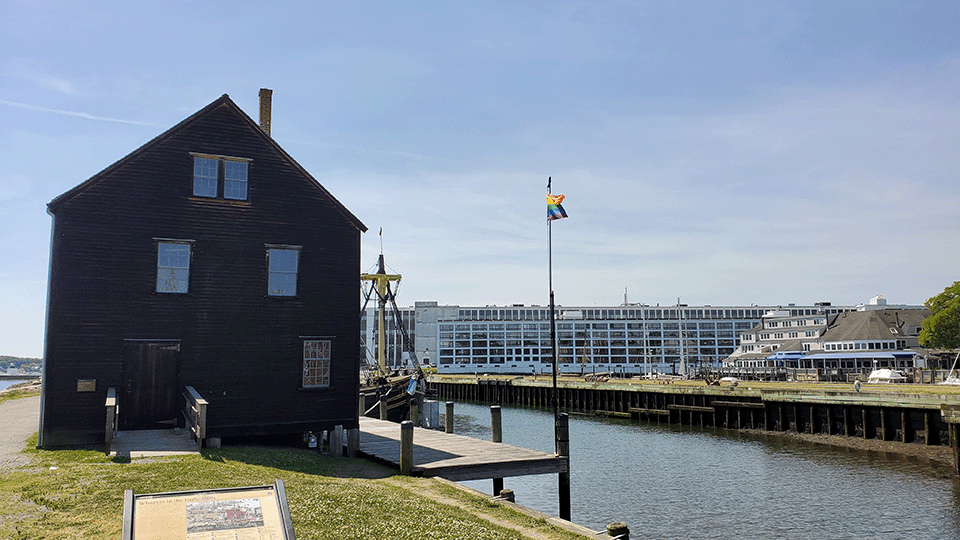
But it struck me, that we are still capable of persecuting those who are different.
I am happy to have seen so many Pride emblems in Salem, as I know there are as many LGBTQ+ people in the witch community as there are in the arts community I have been part of for most of my life.
But I see that we still have a long way to go as human beings to be worthy or our dominion of the planet,
I came away from Salem changed.
And I am pleased with that. I hadn’t expected that.
But if we are lucky the world teaches us when don’t expect it.
See you next week.

